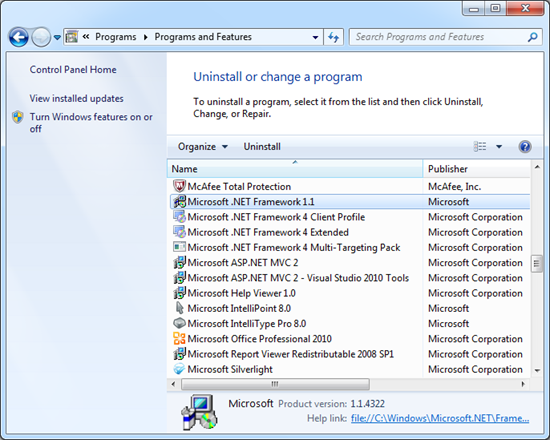
LpType As Long, ByVal lpData As String, lpcbData As Long) As Long Private Declare Function RegEnumValue Lib " advapi32.dll" Alias " RegEnumValueA" (īyVal hKey As Long, ByVal dwIndex As Long, ByVal lpValueName As String, ' Codes returned by Reg API calls Private Const ERROR_NONE = 0 Private Const ERROR_BADDB = 1 Private Const ERROR_BADKEY = 2 Private Const ERROR_CANTOPEN = 3 Private Const ERROR_CANTREAD = 4 Private Const ERROR_CANTWRITE = 5 Private Const ERROR_OUTOFMEMORY = 6 Private Const ERROR_INVALID_PARAMETER = 7 Private Const ERROR_ACCESS_DENIED = 8 Private Const ERROR_INVALID_PARAMETERS = 87 Private Const ERROR_NO_MORE_ITEMS = 259 ' Registry API functions used in this module (there are more of them) Private Declare Function RegOpenKey Lib " advapi32.dll" Alias " RegOpenKeyA" (īyVal hKey As Long, ByVal lpSubKey As String, phkResult As Long) As Long Private Declare Function RegOpenKeyEx Lib " advapi32.dll" Alias " RegOpenKeyExA" (īyVal hKey As Long, ByVal lpSubKey As String, ByVal ulOptions As Long,īyVal samDesired As Long, phkResult As Long) As Long Private Declare Function RegQueryValueEx Lib " advapi32.dll" Alias " RegQueryValueExA" (īyVal hKey As Long, ByVal lpValueName As String, ByVal lpReserved As Long, Public Const HKEY_CURRENT_CONFIG = &H80000005

Public Const HKEY_PERFORMANCE_DATA = &H80000004

Public Const HKEY_LOCAL_MACHINE = &H80000002 Public Const HKEY_CURRENT_USER = &H80000001 Take note of the Release entry (in this case 0圆0636) and convert this from hex to decimal using something like the built in Windows Calculator.Copy Code ' Registry value type definitions Public Const REG_NONE As Long = 0 Public Const REG_SZ As Long = 1 Public Const REG_EXPAND_SZ As Long = 2 Public Const REG_BINARY As Long = 3 Public Const REG_DWORD As Long = 4 Public Const REG_LINK As Long = 6 Public Const REG_MULTI_SZ As Long = 7 Public Const REG_RESOURCE_LIST As Long = 8 ' Registry section definitions Public Const HKEY_CLASSES_ROOT = &H80000000 Reg query “HKEY_LOCAL_MACHINE\SOFTWARE\Microsoft\NET Framework Setup\NDP\v4\Full” NETFramework folder like this: cd “\Program Files (x86)\Reference Assemblies\Microsoft\Framework\.NETFramework” and you will see the installed versions: For example if you url is the Kudu endpoint is ĭebug console command to get the. Use the URL for your app service and insert. Open your Azure App Service and go to Advanced Tools and click Go:


You can do this from the portal or by using the URL of your Azure App Service. The quickest way to do this is to open the Kudu console for your Azure App Service. NET version in Azure App Services (Azure Web Apps, Azure Mobile Apps etc…). We have had a few questions about this so I figured I would create a quick blog covering how to determine the installed.


 0 kommentar(er)
0 kommentar(er)
